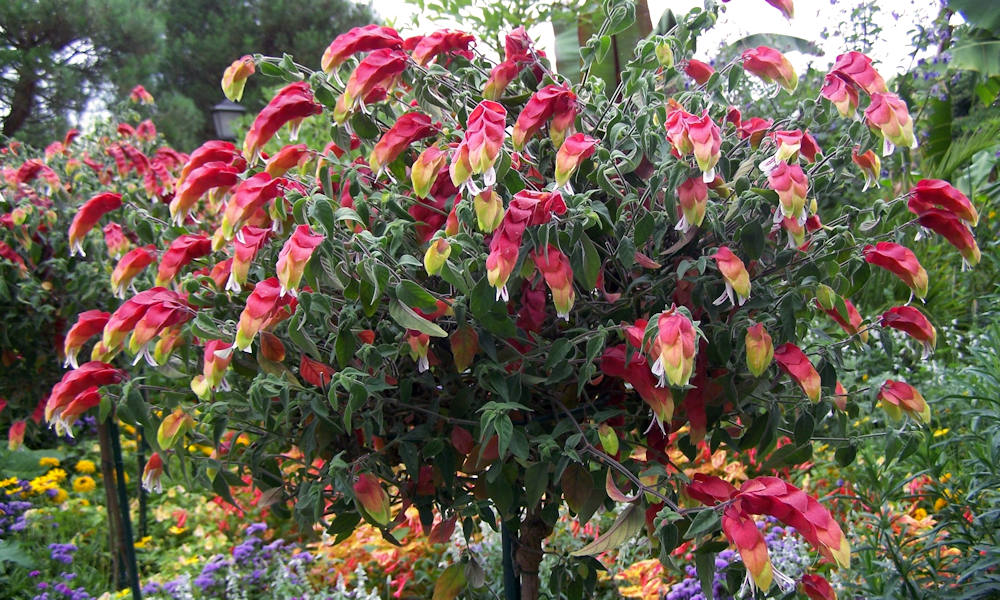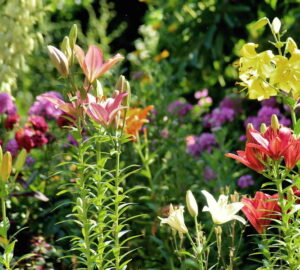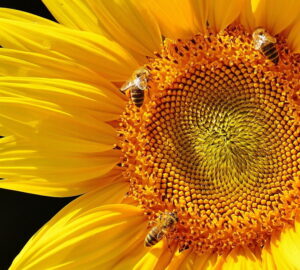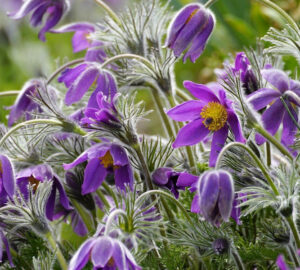With its vibrant blooms resembling shrimp, this low-maintenance and versatile plant is a perfect choice for balcony gardeners, adding a touch of tropical beauty to their outdoor spaces throughout the year.
The shrimp plant (Justicia brandegeeana), also known as the Mexican shrimp plant or shrimp flower, is a popular choice for balcony gardeners due to its vibrant blooms and low-maintenance nature. Here’s an introduction to the shrimp plant and its requirements as a container plant:
Plant Description
The shrimp plant is an evergreen perennial that features attractive, elongated leaves and unique flower spikes that resemble shrimp. The flowers are usually white or cream with splashes of vibrant red or pink, giving it a striking appearance.
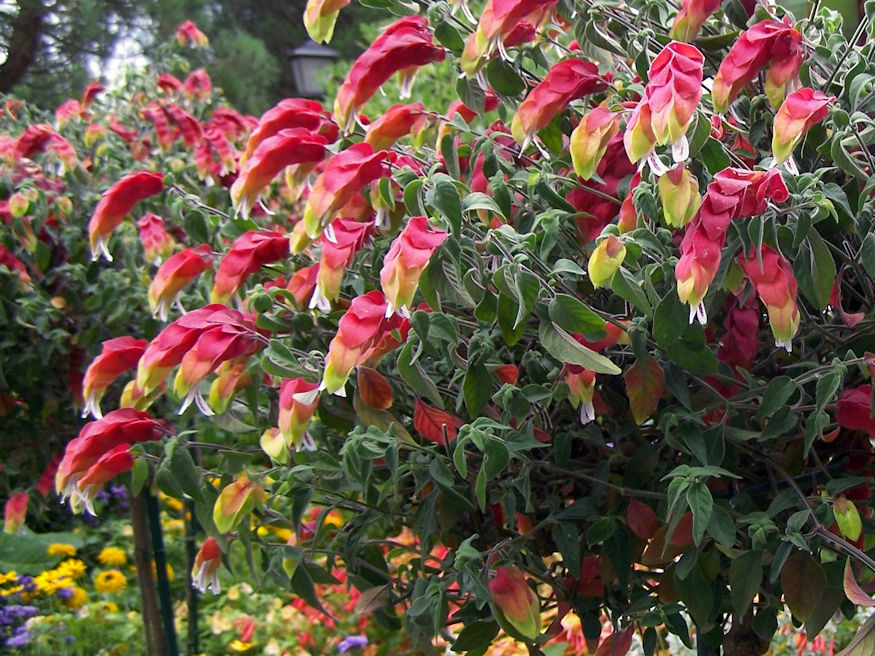
Temperature and Climate
The shrimp plant is native to warm regions and prefers temperatures between 15°C (60°F) and 29°C (85°F). It is suitable for outdoor growth in USDA hardiness zones 9-11, but it can also be grown as a houseplant in colder climates.
Light Requirements
Shrimp plants thrive in bright, indirect light. Place them on a balcony or patio where they receive partial sun or dappled shade. Avoid direct sunlight during the hottest parts of the day, as it can scorch the leaves.
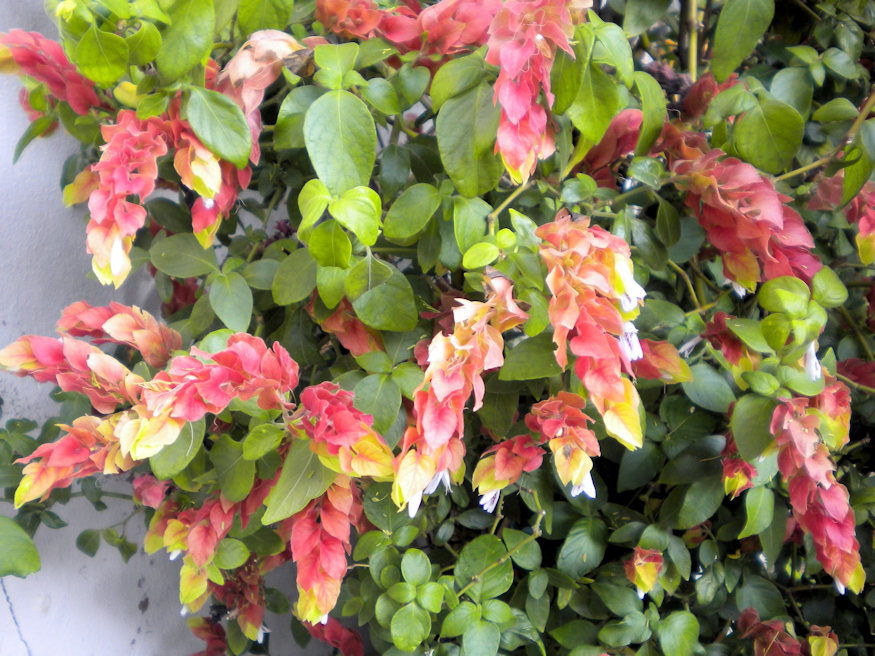
Soil Requirements
Use a well-draining potting mix for container cultivation. A mix of peat moss, perlite and compost works well. This type of soil provides adequate drainage while retaining some moisture.
Watering
Provide consistent moisture to the shrimp plant, but avoid overwatering, as it is prone to root rot. Water the plant when the top inch of soil feels dry, allowing excess water to drain out of the container. Ensure that the pot has proper drainage holes to prevent waterlogging.
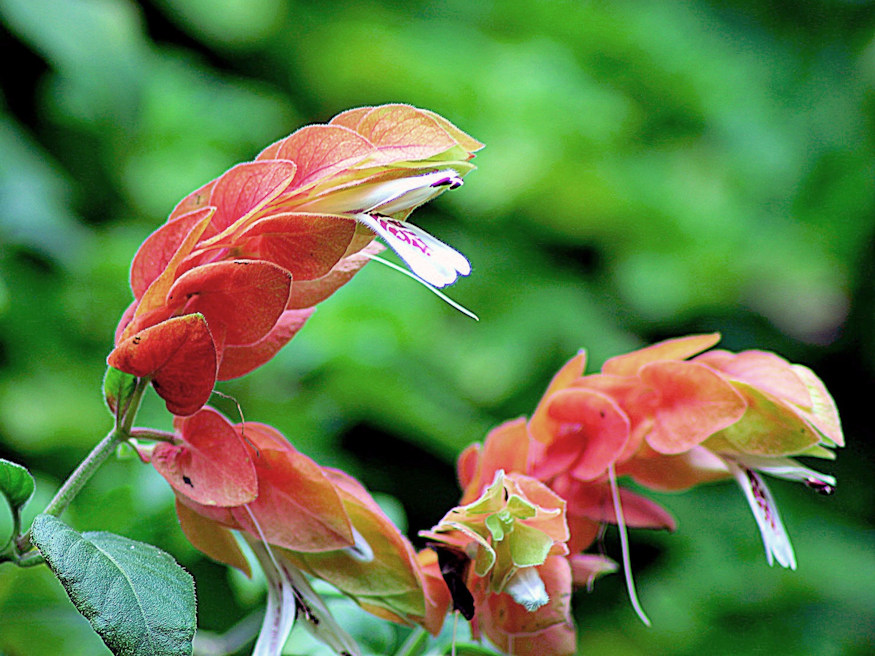
Fertilization
Feed the shrimp plant with a balanced, water-soluble fertilizer once every month during the growing season (spring and summer). Follow the instructions on the fertilizer package for proper dosage.
Pruning
Regular pruning helps maintain a compact and bushy shape. Trim back leggy or straggly stems to encourage new growth and promote a fuller plant.
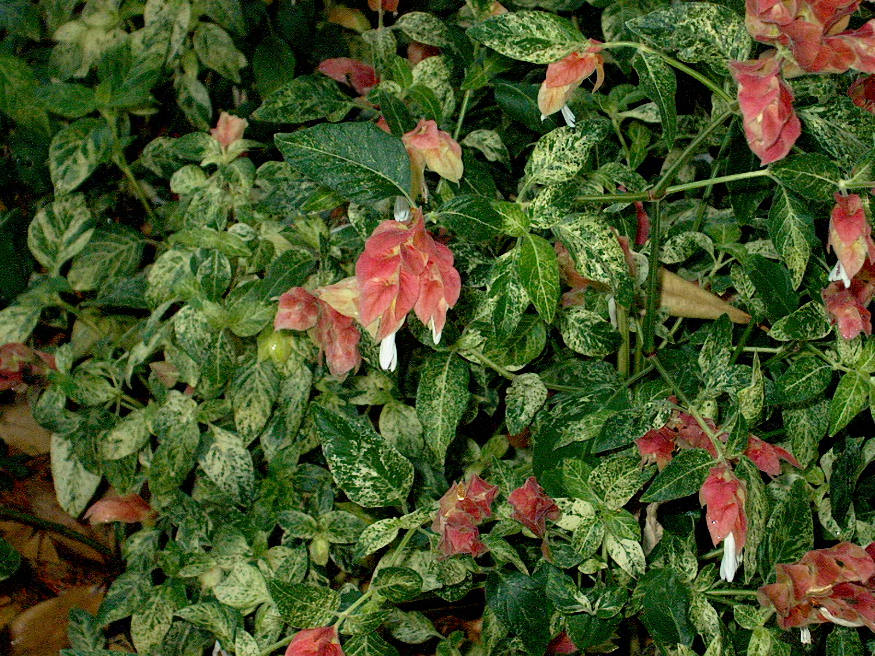
Pests and Diseases
The shrimp plant is relatively resistant to pests and diseases. However, keep an eye out for common issues like aphids, spider mites and whiteflies. Treat any infestations promptly with organic insecticidal soap or neem oil.
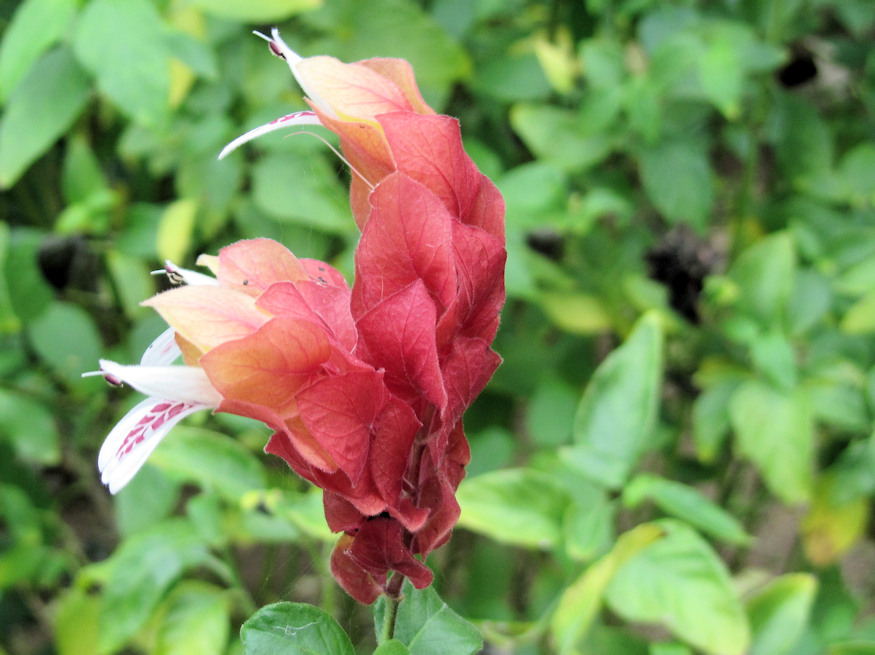
Overwintering
If you live in a colder climate and want to overwinter your container shrimp plant indoors, here are some steps to follow:
- Timing: Plan to bring the shrimp plant indoors before the first frost in your area. Ideally, do this when nighttime temperatures consistently drop below 10°C (50°F) .
- Pruning and Inspection: Before bringing the plant indoors, inspect it for pests and diseases. Trim back any leggy or overgrown stems to maintain a compact shape. This is also a good opportunity to remove any dead or damaged foliage.
- Location: Find a suitable indoor location for your shrimp plant. Choose a spot that receives bright, indirect light, such as near a south-facing window. The plant needs at least 4-6 hours of sunlight daily.
- Temperature and Humidity: Shrimp plants prefer temperatures between 15°C (60°F) and 29°C (85°F). Keep the indoor environment within this range. Also, maintain a moderate level of humidity by misting the leaves regularly or placing a tray of water near the plant.
- Watering: Adjust the watering schedule for indoor conditions. Water the shrimp plant when the top inch of soil feels dry. Be careful not to overwater, as it is prone to root rot. Ensure that the container has proper drainage to prevent waterlogging.
- Fertilization: Reduce the frequency of fertilization during the winter months. Instead of monthly feeding, apply a balanced, water-soluble fertilizer every 6-8 weeks to provide some nutrients.
- Pest Control: Keep a close eye on your shrimp plant for any signs of pests. Indoor environments can sometimes encourage pest infestations. If you notice any pests like aphids or spider mites, treat them promptly using organic insecticidal soap or neem oil.
- Pruning and Dormancy: During the winter months, the shrimp plant may enter a period of dormancy, with reduced growth and flowering. It’s normal for the plant to shed some leaves during this time. If necessary, prune back any leggy or unhealthy growth to maintain a compact shape.
- Spring Transition: As the weather begins to warm up in spring, gradually reintroduce the shrimp plant to outdoor conditions. Start by placing it in a sheltered spot outdoors for a few hours each day, gradually increasing the exposure to sunlight over a week or two. This process, known as hardening off, helps the plant acclimate to outdoor conditions after a period of indoor growth.
By following these steps, you can successfully overwinter your container shrimp plant in colder climates and ensure its health and vitality for the following growing season.
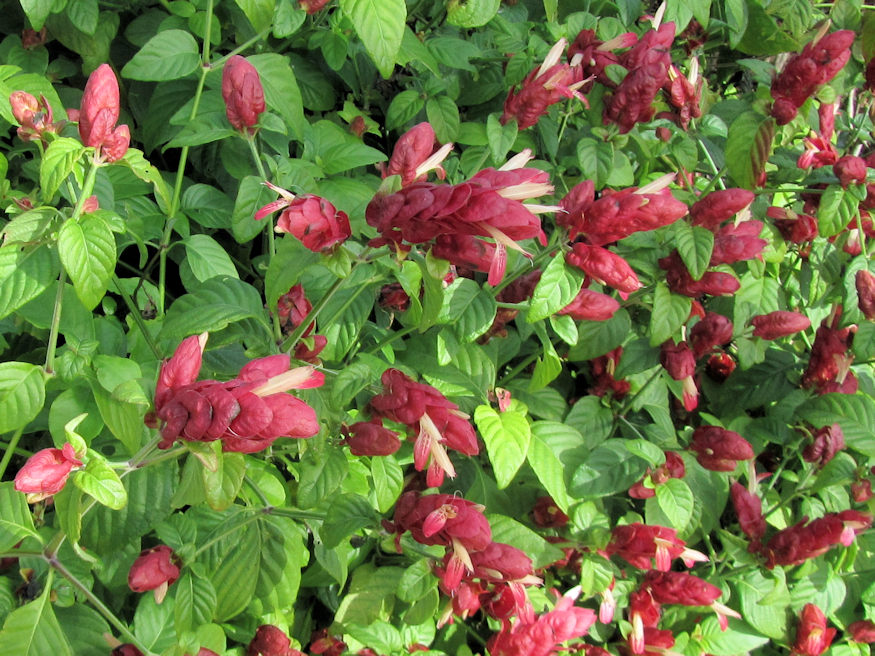
Why Is It a Good Choice for Balcony Gardeners?
- Vibrant Blooms: The shrimp plant’s eye-catching flowers add a burst of color to any balcony garden, attracting butterflies.
- Attractive Foliage: Even when not in bloom, the shrimp plant’s elongated leaves provide an appealing green backdrop for your balcony space.
- Low-Maintenance: It is a relatively low-maintenance plant that can tolerate some neglect. It requires minimal pruning and is generally resistant to pests and diseases.
- Compact Size: With a moderate growth habit, the shrimp plant is well-suited for containers, making it an ideal choice for smaller balcony gardens.
- Versatility: The shrimp plant can thrive in both outdoor and indoor environments, allowing balcony gardeners to enjoy its beauty year-round.
By following these care guidelines, balcony gardeners can enjoy the unique beauty of the shrimp plant while adding a touch of tropical flair to their outdoor spaces.



